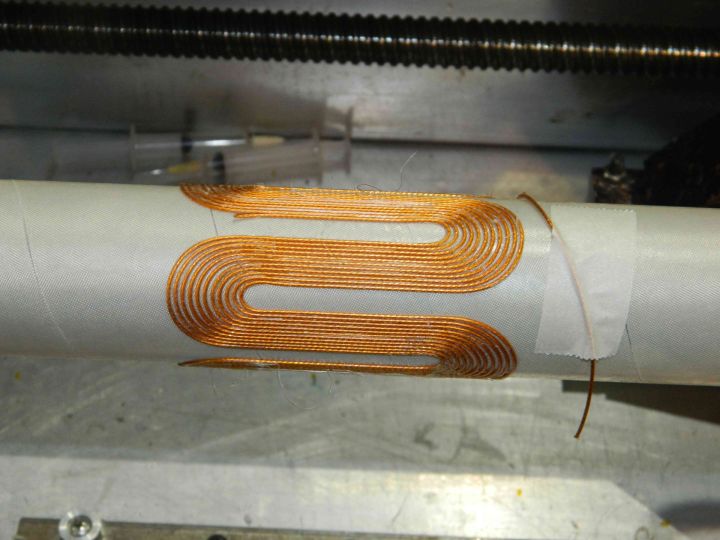Magnetic Trap for Antimatter
What is antimatter?
Using Einstein’s equation, E=mc2, particle accelerators have produced many new types of particles. Among them are antimatter particles, which have the exactly same mass as particles but exactly opposite electrical charge. Examples are antiprotons and antielectrons. Antielectrons are commonly called positrons. When particles and antiparticles collide, they annihilate. Antihydrogen atoms consist of an antiproton and a positron. Because antiprotons are about 2,000 times heavier than positrons, accelerators make many fewer antiprotons than positrons.
Why study antimatter?
The properties of antimatter play an important role in our understanding of the universe. This is because the origin of the universe, the Big Bang, should have produced exactly equal amounts of matter and antimatter, which should then have mutually annihilated, whereas the universe we observe now is almost entirely composed of matter. Somehow, the Big Bang’s production of matter and antimatter did not exactly balance. The CERN laboratory has set up a facility, the Antiproton Decelerator, to focus on the physics of antiprotons. The AD generates antiproton by slamming protons into an iridium target, and then decelerates the antiprotons to an energy that can be readily used by experiments. The ALPHA experiment further slows the antiprotons, and then steers them into a region populated by slowly-moving positrons. Some of the antiprotons can combine with positrons to produce antihydrogen. The antihydrogen, like hydrogen, has an electrical charge of zero.
ALPHA Experiment, Phase I
The initial goal of the ALPHA experiment was to trap a statistically-significant number of antihydrogen atoms. To do this, they needed a magnet system that would produce a “magnetic trap” -- a special region that would confine the electrically-neutral antihydrogen long enough to detect annihilations. The magnetic trap was built at the Magnet Division’s Direct Wind facility. The superconducting magnet system had two solenoid coils, each mounted at the ends of an octupole coil. The magnetic field confined the antihydrogen through its interaction with a special property of the antihydrogen, the magnetic moment. This initial phase of the alpha experiment demonstrated the production of antihydrogen by presenting strong evidence for the detection of 38 events.
ALPHA Experiment, Phase II
Using the experience gained in the first phase, the ALPHA group designed a significant upgrade to the experiment in order to be able to trap more antihydrogen atoms for longer periods of time. The upgrade included a more complex Direct Wind magnet system: one octupole coil with five mirror coils and two solenoid coils strategically placed on the same cylindrical support tube as the octupole. The extra coils were needed to flatten the field to facilitate measurements of the excited state of antihydrogen; technically to go from the lowest state (called the 1s state) to the next higher state (2s) and compare the required energy to accomplish this transition to the (much more precise) measurements of the 1s to 2s transition in hydrogen that have been made starting early in the 20th century. The ALPHA measurement of the transition agreed with the hydrogen measurement within 2 x 10-12. The group was also able to measure the excitation from 1s to the 2p level. This measurement agreed with the hydrogen measurement with 5 x 10-8; more importantly, this transition can be used to laser cool the antihydrogen atoms.
ALPHA-g
The ALPHA-g experiment is designed to detect matter-antimatter differences due to the effect of gravity. (Prior matter-antimatter differences detected by the ALPHA experiment would have been due to two other forces that shape the universe: electromagnetic, and strong.) To do this, the magnet and detector system will be mounted vertically. After being trapped, the trap will be switched off and the positions where the antihydrogen annihilates with the trap wall will be used to measure the acceleration due to gravity. The Direct Wind magnet will have a total of eight octupole coils and 23 solenoid coils. Completion of the magnet is scheduled for the fall of 2019.
ALPHA web site:
http://alpha.web.cern.ch/
Practice winding of octupole coil


